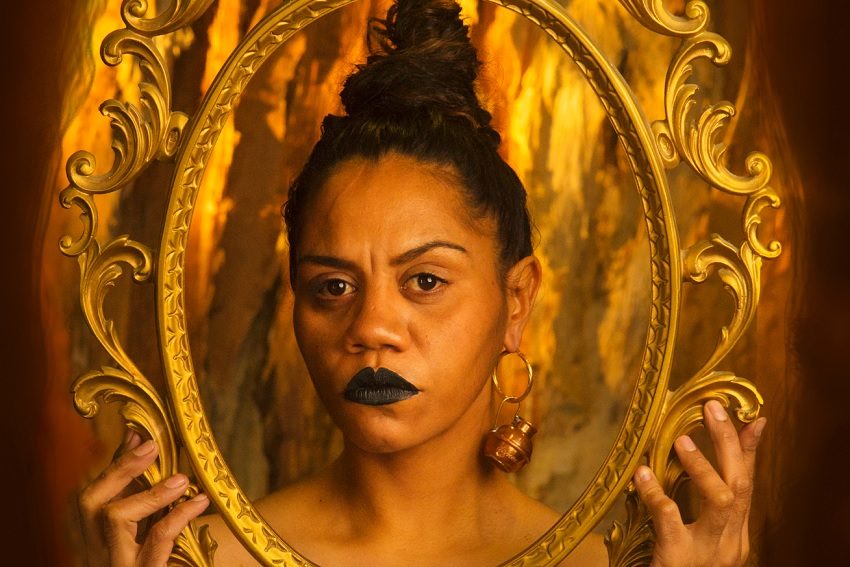Exploring Future Indigenous Matriarchs

TARNANTHI exhibition Next Matriarch celebrates female expression and strength, and looks at the future of Aboriginal women.
Curated by Yorta Yorta woman Kimberley Moulton and Liz Nowell, Next Matriarch brings together seven Aboriginal women artists who reflect the next wave of sovereign female voices in Australian contemporary art.
“We particularly wanted to look at the future of First Peoples’ matriarchal roles and women in our communities and in our art and cultural space,” Moulton says.
The selection of artists includes early-career and long-practising artists from across the country. They work in a range of media including video, photography, installation and painting. Paola Balla, Ali Baker, Hannah Bronte, Miriam Charlie, Amrita Hepi, Nicole Monks and Kaylene Whiskey explore the role of the matriarch through their work. While the artists approach the notion of matriarch in individual ways, they complement each other by addressing similar narratives of culture, women and country.

Hannah Bronte, Mother Lava (2017)
“The works in this show are not only grounded in the cultural relationships and connections of the artists but look at the different roles women play in family, environmental protection and community,” Moulton says. “They contribute a strong voice to the significance of First Peoples’ female art within the discourse of contemporary art in Australia.”
The exhibition looks at personal as well as playful responses to the theme. For example, Monks’ work Mother is a series of animated self-portraits while pregnant. The work is a personal reflection of becoming a mother for the first time, documenting her changing body and emotions throughout her pregnancy.
Whiskey’s paintings are playful and colourful, presenting women as superheroes with extraordinary powers. From the everyday community member to the celebrity she admires, they all embody strength and have a strong sense of who they are.
Balla’s work, Lovescapes, depicts seven generations of her family sitting in front of an image of her country (the ‘lovescape’). The work is a type of self-portrait that suggests that her family and traditional lands play an important part in her sense of self.

Kaylene Whiskey, Strong Kungka Story 2 (2017)
Also of note is Hepi’s Dance Rites, a work that spans performance, video and installation. Hepi, a dancer and choreographer, is critiquing ideas of authenticity, tradition and the continuum of culture.
“Dance Rites deconstructs the female body in relation to the archive and questions what it means to prove cultural authenticity through the lens of a performative space,” Moulton says.

Amrita Hepi, Dance Rites (2017), video still
Next Matriarch explores the notion of matriarchy and how it fits into contemporary Australian art discourse. The exhibition offers audiences the chance to reflect on the role of women and matriarchs in today’s society and what the future holds.
“The audience will have the opportunity to connect with the artist’s visions of current matriarchy and of powerful women,” Moulton says. “Personal stories of family histories, motherhood and ideas around who are our super women, including future matriarchal imaginings and environmental considerations, are all present within the space.”
Next Matriarch
TARNANTHI
ACE Open
Tuesday, October 14 to Saturday, December 9
tarnanthi.com.au
aceopen.art
Header image: Ali Gumilya Baker, Sovereign GODDESS notdomestic #2, (detail.)